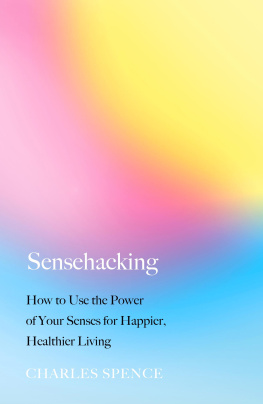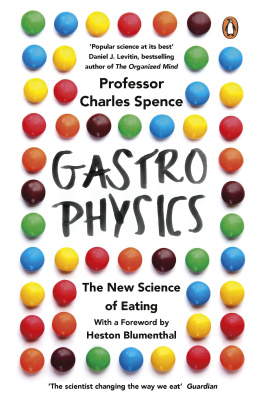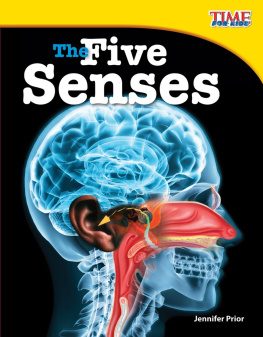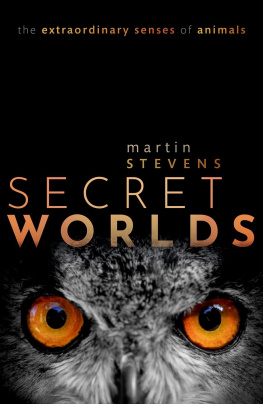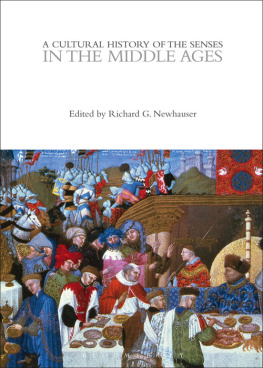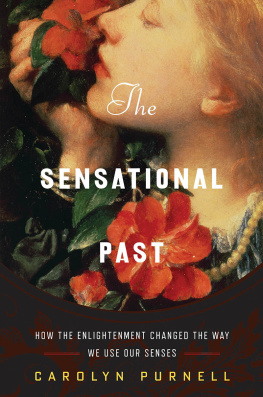Charles Spence
SENSEHACKING
How to Use the Power of Your Senses for Happier, Healthier Living

PENGUIN BOOKS
UK | USA | Canada | Ireland | Australia
New Zealand | India | South Africa
Penguin Books is part of the Penguin Random House group of companies whose addresses can be found at global.penguinrandomhouse.com.

First published by Viking in 2021
Copyright Charles Spence, 2021
The moral right of the author has been asserted
ISBN: 978-0-241-36116-0
This ebook is copyright material and must not be copied, reproduced, transferred, distributed, leased, licensed or publicly performed or used in any way except as specifically permitted in writing by the publishers, as allowed under the terms and conditions under which it was purchased or as strictly permitted by applicable copyright law. Any unauthorized distribution or use of this text may be a direct infringement of the authors and publishers rights and those responsible may be liable in law accordingly.
To Babis, for keeping faith
Illustrations
An example of anthropomorphism in product design. ( Karim, Ltzenkirchen, Khedr and Khalil)
Some examples of brands that have incorporated a smile into their logo. (Amazon, Thomson/Tui, Hasbro)
The first show kitchen completed by John Nash in 1818.
The NozNoz. (NozNoz)
My home in the Colombian cloud forest.
Emma, the office worker of the future.
Amazons flagship offices in downtown Seattle. (Joe Mabel)
The 7UP logo. (Jetijones)
An example of subliminal symbolic messaging.
Sub-additivity in the marketplace.
How a mirror box can be used to trick a phantom limb patient into seeing their missing limb. (US Navy photo by Mass Communication Specialist Seaman Joseph A. Boomhower)
The Venus of Willendorf. (MatthiasKabel)
Lunch with Oysters and Wine by Frans van Mieris.
Many high value detainees were subjected to sensory deprivation at Guantnamo Bay. (US Navy)
Arthur Doves Fog Horns (1929). (yigruzeltil)
A series of shocking experiments conducted in the 1950s by Harry Harlow on baby monkeys.
The Hug Shirt. (Cute Circuit)
Human cyborg, or should that be eyeborg, Neil Harbisson. (Dan Wilton)
Cyborg Nests North Sense. (Eugene Dyakov)

1. Introduction
From the moment we are born until the last breath we take, sensation is fundamental to our existence. Everything we perceive, experience and know comes to us through our senses. As Francis Galton, Charles Darwins half-cousin, noted in 1883, The only information that reaches us concerning outward events appears to pass through the avenue of our senses; and the more perceptive the senses are of difference, the larger is the field upon which our judgement and intelligence can act.
Yet, paradoxically, what many of us complain about is sensory overload. We are all tired of being bombarded by too much noise, too much information, and too many distractions.
North American researcher Tiffany Field, from the Touch Research Institute and Miller School of Medicine in Miami, has been arguing for years that most of us are touch hungry, and that this may be leading to a range of negative outcomes for our health and well-being. The skin, by far the largest organ we sense with, accounts for something like 1618 per cent of our body mass. And if you dont have anyone to cuddle, dont worry; there are now professional huggers who, for a fee, will give you one. So, neglect your biggest sense at your peril. The Covid-19 pandemic set many of us thinking how we might deliver the touch that we all so urgently need from afar. We will return in the final chapter to the question of how technology may be used to deliver this interpersonal touch at a distance.
It has been estimated that more than a billion people will be over sixty years of age by the year 2025. Many older people complain about a lack of stimulation because no one wants to touch them since they have become, they say, physically unattractive.
Aging takes its toll on all our senses, though the decline starts at different ages for each of them. Fortunately, we have hearing aids and glasses to ameliorate the deterioration of sight and sound but, crucially, there is as yet nothing that can be done to restore our more emotional senses of touch, smell and taste. Consequently, the elderly are in very real danger of suffering sensory underload.
If you ask which of their senses they would miss the most, most people immediately say their sight. However, the data from quality-of-life indicators and suicide rates indicate that those who have lost their sense of smell are actually often much worse off. After all, many of those losing vision later in life can still picture their loved ones when hearing their voices. This can help to soften the blow of sensory loss, at least for a while. But when we lose the ability to smell, there really is nothing left of that sense. Few amongst us inhabit a world of remembered smells that is anything like as rich as in the mentally imagined world that we can conjure before our minds-eye.
Over the last quarter of a century or so, I have been lucky enough to work with many of the worlds largest companies translating the emerging science of the senses into implementable strategies to help promote health and well-being, not to mention profitability (obviously). This includes everyone from Johnson & Johnson to Unilever, from Asahi to the VF Corporation, and from Dulux to Durex. In the pages that follow, I want to share with you what I have learned.
I have spent many years working with paediatricians to highlight the importance of ensuring a balanced mix of multisensory stimulation for the optimal social, emotional and cognitive development of babies. I have also consulted extensively for many high-street brands and mall owners across the globe, devising new ways to entice you to spend money at their emporia of the senses. (We will learn more about this in the Shopping chapter.) These, then, are just a few of the secrets of the senses that I will be sharing with you.
So what exactly is sensehacking? It can be defined as using the power of the senses, and sensory stimulation, to help improve our social, cognitive and emotional well-being. It is only by recognizing the unique capacities of every one of our senses, and by acknowledging the predictable ways in which they interact to guide our feelings and behaviours, that we can hope to hack our own sensory experience most effectively. By so doing, we can all start to improve the quality of life of those we care about, starting with ourselves. No matter whether you want to feel more relaxed or more alert; no matter whether you want to be more productive or less stressed at work; no matter whether you want to sleep better, figure out how to look your best, or else get the most out of your workout at the gym; the science of sensehacking is here to help you to achieve your goals and aspirations.
The chapters in this book are organized around the key activities of daily life, and a number of the most frequently encountered everyday environments in which we are likely to find ourselves, at least if your life is anything like mine. We start at your front door, in the aptly named Home chapter. We will take a look inside the living room, the kitchen and the bathroom in order to see how each of our senses can be hacked to make our homes more hospitable and more habitable, not to mention easier to sell. We then move on to look at the benefits of nature in the Garden chapter. Next, in the Bedroom chapter, we take a look at how to sensehack our sleep by playing with perception, in literally every sense. This is a particularly important issue, since so many of us currently complain about problems getting enough sleep, and an especially worrying one, given the stats concerning how bad for our health and well-being missing out on sleep is. Having covered the home environment, I move on to work, sensehacking Commuting and the multisensory design of the Workplace. Finally, leisure is covered in chapters on Shopping, Healthcare, Exercise and Sport, and Dating. In each case, we will take a look at some of the most effective sense hacks that have been demonstrated to make us spend more, exercise harder, look better, and recover from disease or injury more quickly.

